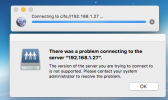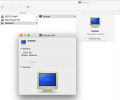Ted Roberts
New Member
Dear experts,
Problem: My HDR appears not to be playing video files over my local network to my (oldish, pre-Android) Sony Bravia smart TV, nor to the the Media Player on my new Roku Streaming stick.
VLC on my iPhone can play the files. Also using the latest Roku software I can mirror the videos on my TV using AirPlay 2. That seems a high-tech Heath Robinson solution, with a bit of stuttering on pay back.
I have the latest version of the Custom Firmware, I have MediaTomb installed. Content sharing is on.The HDR has auto unlock and auto decrypt running. The webif shows the files with icons as decoded and indexed by the Humax DLNA (Media) server.
The TV and Stick can both navigate to the video files, using the built in DLNA server and the MediaTomb server, and show the file details, but neither will play them.
The HDR is connected to my home network using TP-LInk Powerline adapters. The other kit is connected by WiFi.
Occasionally I find a file that will play; I was able to watch the recent Name of the Rose series. I cant recall if that was an HD transmission or not.
I've searched and searched the forums using different keywords, but have not found an answer yet.
I hope someone can point out what I'm doing wrong, or not doing at all.
Fingers crossed in anticipation.
Ted
Problem: My HDR appears not to be playing video files over my local network to my (oldish, pre-Android) Sony Bravia smart TV, nor to the the Media Player on my new Roku Streaming stick.
VLC on my iPhone can play the files. Also using the latest Roku software I can mirror the videos on my TV using AirPlay 2. That seems a high-tech Heath Robinson solution, with a bit of stuttering on pay back.
I have the latest version of the Custom Firmware, I have MediaTomb installed. Content sharing is on.The HDR has auto unlock and auto decrypt running. The webif shows the files with icons as decoded and indexed by the Humax DLNA (Media) server.
The TV and Stick can both navigate to the video files, using the built in DLNA server and the MediaTomb server, and show the file details, but neither will play them.
The HDR is connected to my home network using TP-LInk Powerline adapters. The other kit is connected by WiFi.
Occasionally I find a file that will play; I was able to watch the recent Name of the Rose series. I cant recall if that was an HD transmission or not.
I've searched and searched the forums using different keywords, but have not found an answer yet.
I hope someone can point out what I'm doing wrong, or not doing at all.
Fingers crossed in anticipation.
Ted



